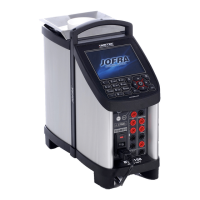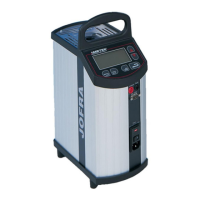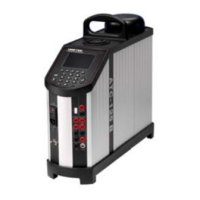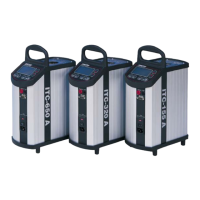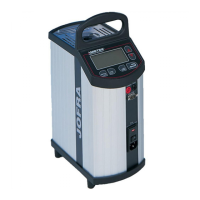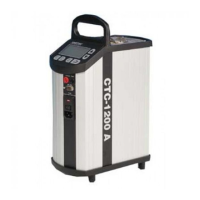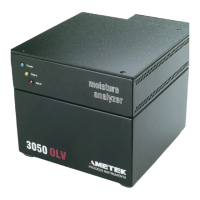127139 13 2014-07-30 29
Ensure a free supply of air to the internal fan located at the
bottom of the instrument.
The area around the calibrator should be free of draught, dirt,
flammable substances, etc.
Check the voltage of the power control switch (on/off switch
(230V/115V)). If the voltage of the power control switch
differs from the line voltage, you must adjust the setting of
the power control switch as follows (see fig. 4):
Warning
The two main fuses must have the specified current and
voltage rating and be of the specified type. The use of
makeshift fuses and the short-circuiting of fuse holders are
prohibited and may cause a hazard.
A. Open the fuse box lid using a screwdriver.
B. Take out the fuse box.
C. Remove both fuses and insert two new fuses.
These must be identical and should correspond to the
line voltage. See chapter 9.0.
B. Turn the fuse box 180° and slide it into place.
Check that the earth connection for the instrument is present
and attach the cable.
Place the parts from the liquid bath kit in the well in the
following order:
Bottom shield – It is very important that the bottom
shield is placed in the well before any calibration is
attempted, as the bottom shield protects the well from
being damaged during calibration.
Stirring magnet – It is very important that the stirring
magnet is in place and spinning before any calibration is
attempted. The stirring magnet ensures minimum
temperature gradient in the fluid. The magnets teflon
cover will over time be worn down, leaving the magnet
flat on one side. This will reduce the spinning ability. A
magnet with a flat side must therefore be replaced.
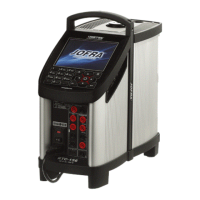
